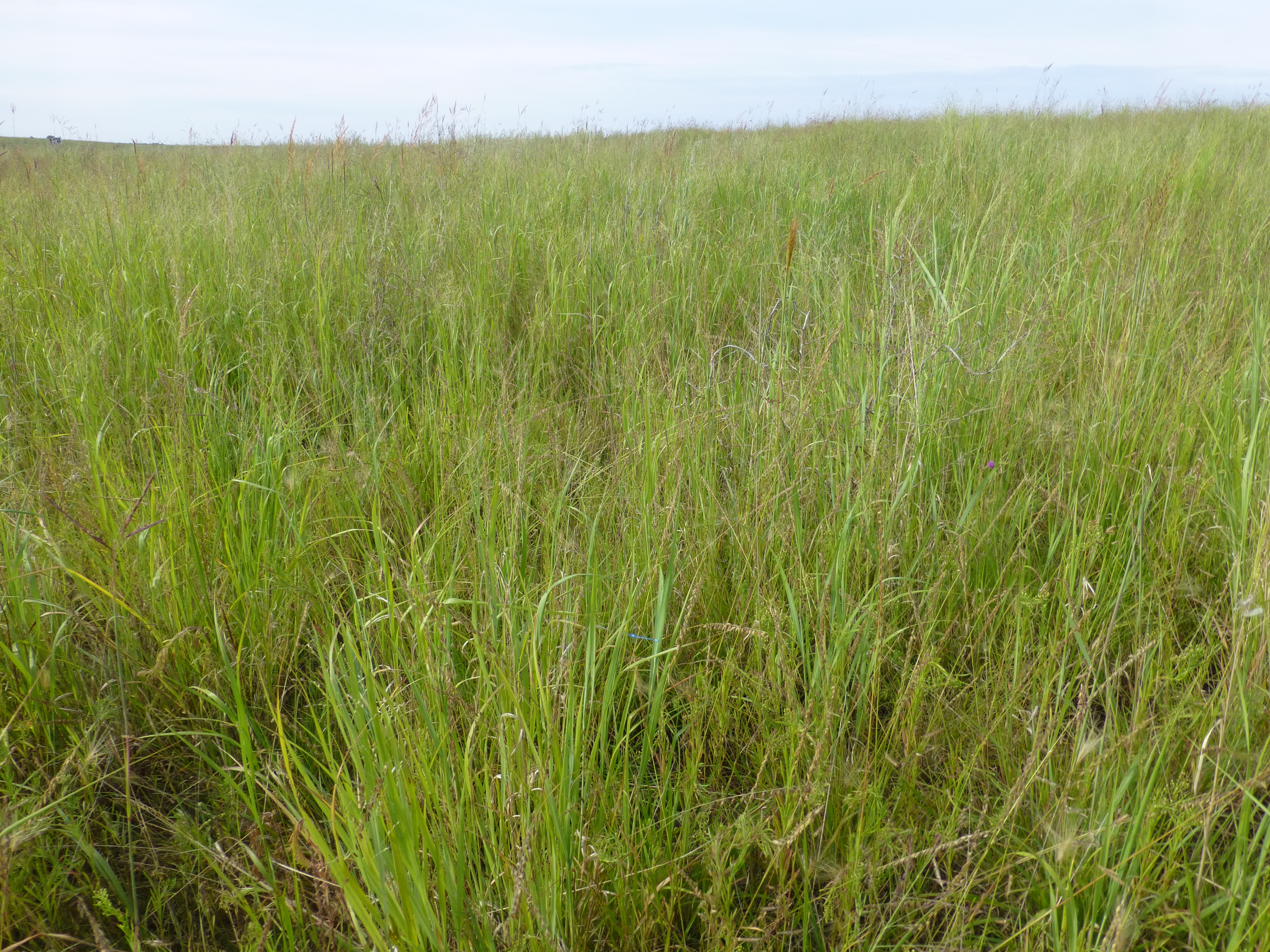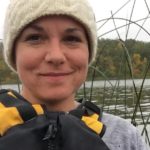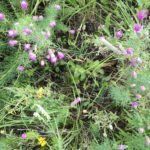
Can you see the pheasant nests in this photo? Neither can the predators! Good nesting areas provide overhead cover and a screen to camouflage pheasant hens which will sit on their eggs for at least 23 days. DEO Photo by Rachel Bush, PFND
By Rachel Bush
With spring turkey season wrapped up, our thoughts and anticipation await the next opening day, mine do at least.
There is a lot of time between now and then, but now is the time of year that those wildlife species we enjoy pursuing so much each fall get down to business. Any upland hunter knows a successful nesting season and good chick recruitment will mean more points and flushes come October. So, what does it take to get there?

We all like to think we can control most things, but weather events are not something we can control, so harsh winter, drought, and deluge aside, let’s focus on what we can control. HABITAT. Specifically, let’s focus on nesting and brood-rearing cover for our favorite upland game bird, the ring-necked pheasant.
Ring-necked pheasants are ground-nesting birds and require undisturbed cover during the nesting season, which for North Dakota ranges from somewhere around April 15 through July for successful nesting activities. The area of undisturbed cover matters, with a minimum block size of 40 acres being ideal. Smaller patches can and do produce birds, but by creating larger blocks, the impacts of nest predation are minimized. It is also best if nesting cover occurs in blocks versus strips, again this has to do with predation.
Nest predators such as skunks, raccoons, and fox are much more efficient at searching narrow strips versus large blocks. Tree rows and any other linear feature that breaks up nesting cover can serve as a travel corridor and increase the search efficiency of nest predators. Having tall trees within nesting cover also provides perch sites for avian predators such as raptors and crows.
Nests that are initiated earlier in the season have a higher likelihood of success and often have more eggs than nests initiated later in the season. Clutch size, which is the number of eggs a hen lays, ranges from seven to 15. More eggs and more success equates to more young-of-the-year birds in the field the following fall. While pheasants are persistent re-nesters, they will only produce one successful nest per year. Pheasants do not double brood in North Dakota, meaning they will not raise more than one brood within a season. If you have witnessed a hen with chicks of different sizes, it is a result of two or more broods mixing and the other hen is likely out of sight nearby.
So what should good nesting cover look like? I could get technical and talk about vertical obstruction, max vegetation height, litter depth, and species composition, but it does not have to be that complicated. There should be enough residual vegetation, which is dry vegetation remaining from the previous growing season, so that a hen is obstructed from view from the sides and above. This means if an area is mowed, hayed, or grazed heavily the previous fall and adequate regrowth did not occur, the area may not be ideal nesting cover early in the nesting season.

I always use the analogy of a football in a field. If you can toss a football down into a field, step back from it and the vegetation obstructs your view of the football, you likely have adequate nesting cover. Another nesting cover consideration includes litter, which is dead vegetation laying on the ground, in which the hen will form her nest bowl, and overhead concealment is also needed. Pheasants will nest in roadside ditches, haylands, alfalfa, Conservation Reserve Program lands, small grain stubble, and pastures. Synchronous hatching occurs after an incubation period that ranges from 23-28 days. Pheasant chicks are precocial, meaning they are down-covered with their eyes open at hatching and leave the nest shortly thereafter. Pheasants chicks self-feed and are not dependent upon the hen for food.
Now that we have covered what some of the nesting requirements are for ring-necked pheasants and what components make idea nesting cover, let’s talk about what it takes to successfully raise those feathered fluff balls. Pheasant chicks are not like the neighborhood robin that depends upon its parents to deliver food to the relative safely of a neatly concealed nest. Pheasant chicks, once dry, follow the hen away from the nest bowl within hours of hatching. Once chicks leave the nest, it is off to find the fuel for growth. For a large cotton ball with toothpick legs, that means finding and catching insect prey. Insect prey during the first four weeks of like makeup between 70 and 100 percent of their diet.
When habitat managers talk about brood habitat, we are talking about an area that has high plant diversity and overhead concealment that is open at ground level. The diversity of plants, specifically flowering plants, attracts a diversity of soft-bodied insects, the same insects that pheasant chicks rely on for the first several weeks of life. Attracting the prey item is one thing, a pheasant chick being able to catch it, is another. Remember, pheasant chicks are small, and need to be able to locate and capture their insect prey. Areas that have bare ground, enable small chicks to more easily pursue and capture that prey, as oppoed to areas with excessive litter covering the ground, inhibiting movement. Having the vegetative structure that provides overhead concealment keeps avian predators from finding and targeting pheasant chicks while their attention is focused on foraging.
There are two great options to create high-quality brood habitat.
The first being an annual mixed species planting that includes a variety of species from cool-season grasses and broadleaved plants, to warm-season grasses and forbs. This type of brood cover would need to be seeded early enough to provide that overhead concealment by mid-June in North Dakota. The bonus of the annual brood cover is each year you can determine the species planted and maintain the openness at the ground level. The drawbacks include missed nesting cover and the annual expense and time commitment for planting. The second option is to create a high diversity perennial planting that includes native bunch grasses, wildflowers, and legumes.
With a perennial planting, you remove the need to replant annually, but the management over the long term will be needed to maintain the early successional, diverse open nature of the habitat.
The uncontrollable factors aside, having quality nesting and brood cover on the landscape is the surest way to see more birds each fall. Whether you are spurred to action to create habitat, support programs that do, or just build your knowledge of the ring-necked pheasant, know that Pheasant Forever staff are here to assist you with any habitat projects you may have.
Rachel Bush is a Dakota Edge Outdoors Contributing Writer and the North Dakota State Coordinator for Pheasants Forever.
